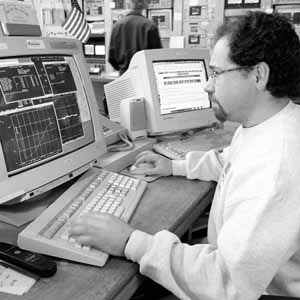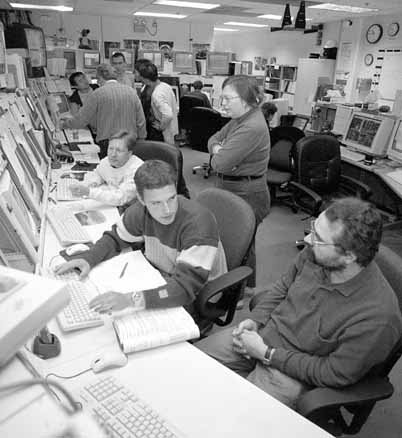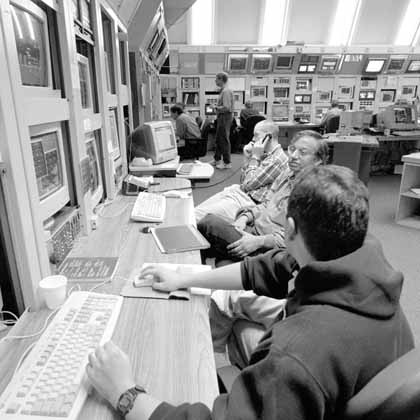 |
|
RunII Well Under Control by Kurt Riesselmann
"This machine doesn't have an on/off switch," said Mike Martens, who just assumed the 24-hour-7-days-a-week responsibility as Run II coordinator. "Every time we start a run, we have to tune the machines, slowly increasing the luminosity."
Luminosity is expert's lingo for the number of collisions produced per second. So far, Fermilab accelerator experts have achieved a peak rate of about 450,000 collisions per second (a luminosity of 7.5x1030 cm-2sec-1), a respectable start for Run II. By January, they want to increase the luminosity to 4x1031 ("four times ten to the thirty-one"), improving the previous record obtained during Run I, which ended in 1996, by about a factor of two.
At present, scientists are using a six-week shutdown to improve accelerator operations and to put the final touches on the CDF and DZero detectors, large instruments that take "snapshots" of the collisions, revealing the nature of the tiniest building blocks of matter. In the past seven months, both CDF and DZero collaborations have tested their equipment, collected the first collision data and refined their computer controls. The planned shutdown, which began on October 8, gives them a chance to repair equipment and supplement existing electronics before the recording of "real" data will start around Thanksgiving.
From the Dzero Control Room, Scientists monitor various detector subsystems such as cooling equipment and data aquisition systems.
In the Main Control Room, operators have access to 90,000 readouts and can contrl more than 40,000 devices related to the accelerators.
|
 On March 1, Collider Run II began at Fermilab. It is a six-year enterprise to produce a record number of proton-antiproton collisions using the world's most powerful particle accelerator, the Tevatron.
On March 1, Collider Run II began at Fermilab. It is a six-year enterprise to produce a record number of proton-antiproton collisions using the world's most powerful particle accelerator, the Tevatron.

